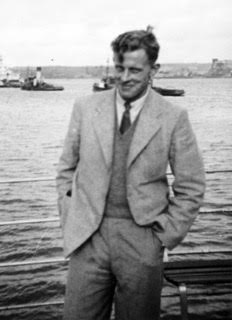Good Fellows of Budleigh and Sidmouth
With the Carter bicentenary approaching in 2013 and that of
Peter Orlando Hutchinson (1810-97) still fresh in local minds where better to
go than to Sidmouth Museum, seen above, to discover how a town only a few miles along the coast
from Budleigh commemorated one of its best known characters from the Victorian
age.
For P.O.H., though born in Winchester
Sir Ambrose Fleming (1849-1945) worked with Marconi, and
invented the diode valve.
Sir Norman Lockyer (1836-1920), shown above, discovered helium and the
spectrum of the sun, and was Editor of Nature
for 50 years from its foundation.
Sidney George Brown (1873-1948) was an inventor and engineer who devised the gyro-compass. His company S.G. Brown Ltd was based atWatford .
Sidney George Brown (1873-1948) was an inventor and engineer who devised the gyro-compass. His company S.G. Brown Ltd was based at
And finally there was Frederick Lindemann (1886-1957) who was
Churchill's scientific adviser, honoured as the 1st Viscount Cherwell.
The four Fellows naturally get pride of place in Sidmouth's
Museum, an attractive building called Hope Cottage next to the Parish Church London
There's a cabinet devoted to each FRS displaying relevant
gadgets such as the gyro compass manufactured by S.G. Brown. But there are also
photos of traders, fishermen and local authors such as R.F. Delderfield whose
centenary we've been celebrating this year.
And then of course there's P.O.H. Not a Fellow of the Royal Society of course.
In fact he was a self-educated kind of fellow, but what a character. An author,
artist, eccentric who insisted on wearing military uniform though not entitled
to do so, antiquary, amateur geologist, long-distance walker - his
walking-stick is one of the items on view - numismatist, and some might say
trouble-maker.
American readers may like to know that Peter Orlando Hutchinson was great grandson to Thomas Hutchinson (1711-1780) the controversial Governor of
Sidmouth Parish Church
Photo credit: Eugene Birchall
Certainly he stirred up a hornets' nest of bitter feelings
on issues such as the renovation of Sidmouth
Parish Church Victoria Isle of
Wight . His diary records his arrival at Cowes
Queen Victoria in 1860 by the painter J.J.E. Mayall
Although his planned interview with the Queen did not take
place he succeeded in having his message about the changes at the Parish Church
Yes, Sidmouth
Museum Fairlynch Museum
Those who want to spend a bit more can splash out on the
splendid edition of Peter Orlando Hutchinson's Diary of a Devon Antiquary: The
Illustrated Journals & Sketchbooks 1871-1894.
And Budleigh's own Henry Carter FRS, seen above? He was of course a totally different character, though a
near contemporary. A professional man who qualified as a surgeon, but like many
who studied medicine at that time including his contemporary and admirer
Charles Darwin, with a keen interest in natural history. And with a career
spent many thousands of miles from East Devon on the Arabian coast and in Bombay
Most of his time seems to have been spent looking down a
microscope at amoebas, bits of old fossil and pieces of sponge. For it's as a
spongiologist that he made his name, with 26 kinds of sponge named after him
and with his researches still valued by experts in the field today. That
includes those scientists who are discovering the exciting possibilities that
sponges can provide in the development of anti-cancer drugs.
No biography of Carter has been written. No diaries and few
letters have been preserved. Yet slowly we can gain an insight into his
character from the 1,894 pages that he wrote on geology and natural history which
appeared in 127 publications during his lifetime.
A decent man with high moral aims. Like his distinguished
anatomy professor William Sharpey he saw the study of natural history as
something equally valuable as medicine in terms of its benefit to humanity.
More than 30 years after their first meeting, Carter revealed how such thinking
had moulded his own philosophy of life. A letter he wrote to Sharpey from
Budleigh Salterton on 30 May 1872, ten years after his return from India
One couldn't really ask for anything more from a scientist.
'Sea, Salt & Sponges!' the next Fairlynch Museum
This is an expanded version of the post at http://www.devonmuseums.net/Good-Fellows-of-Budleigh-and-Sidmouth/Latest-News/Fairlynch-Museum/Museum-News/














Comments
Post a Comment